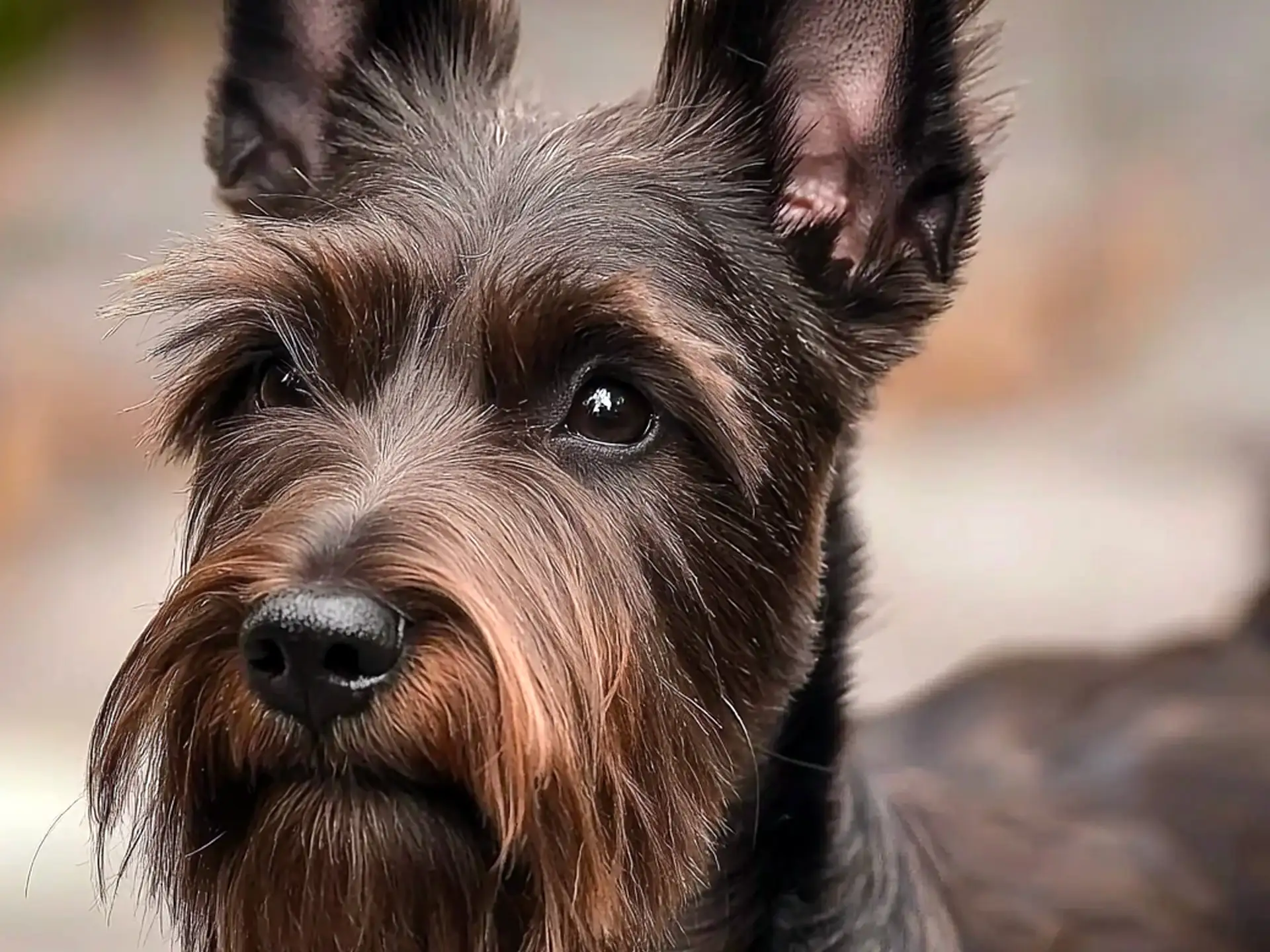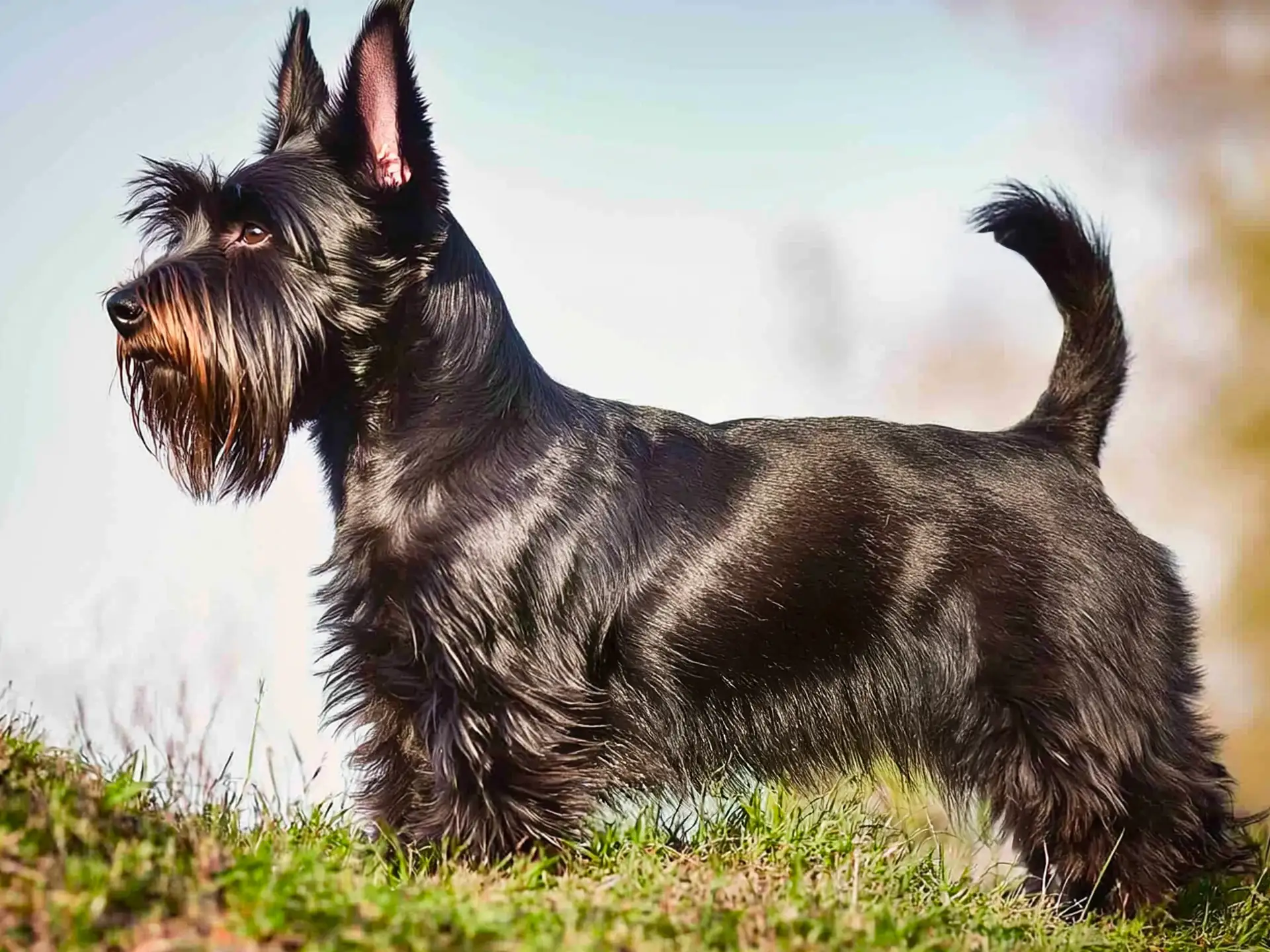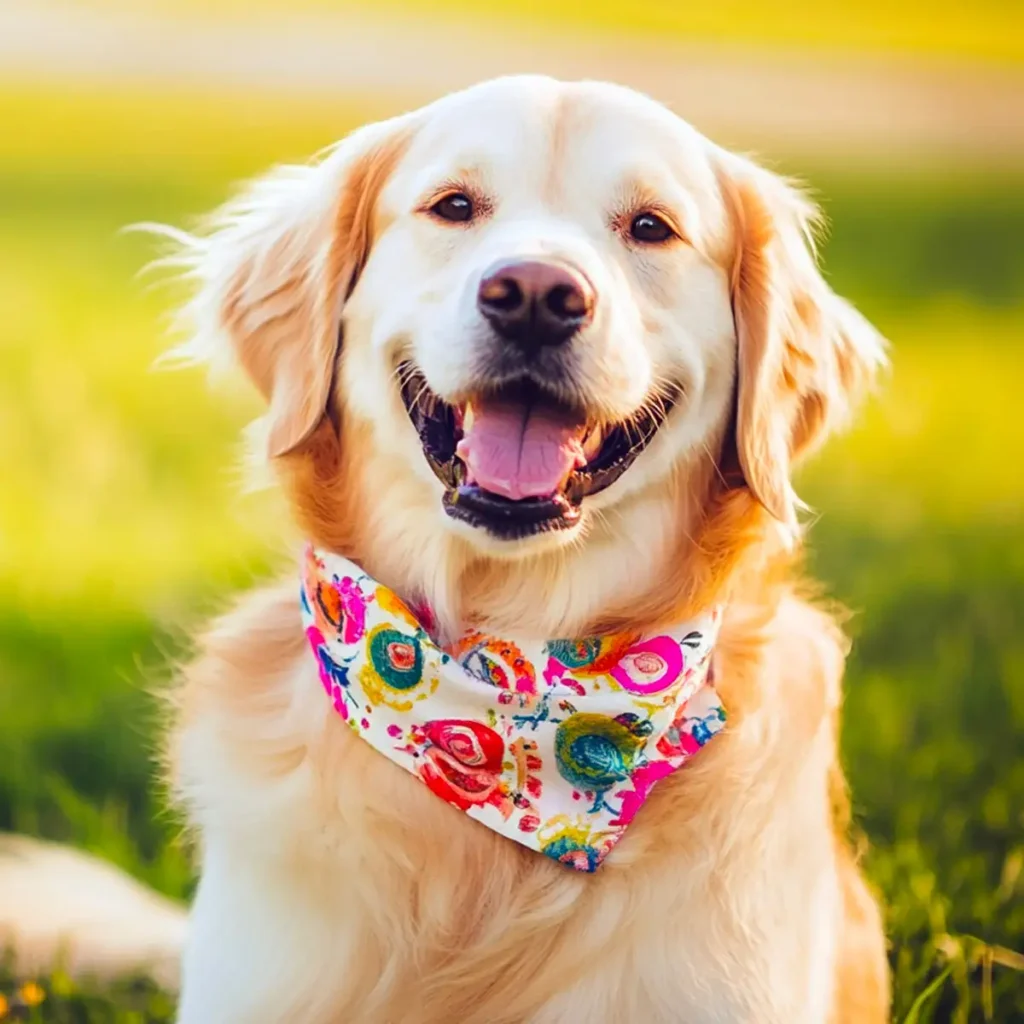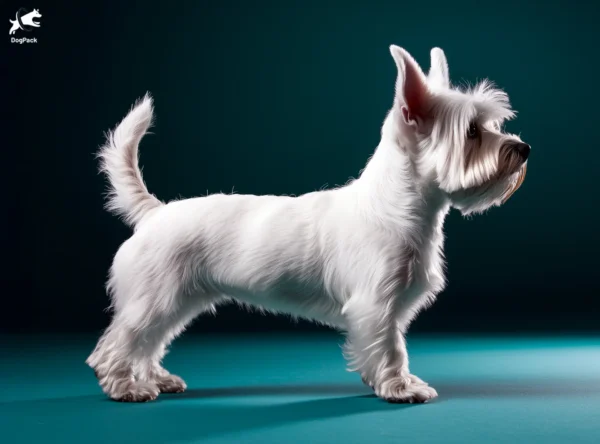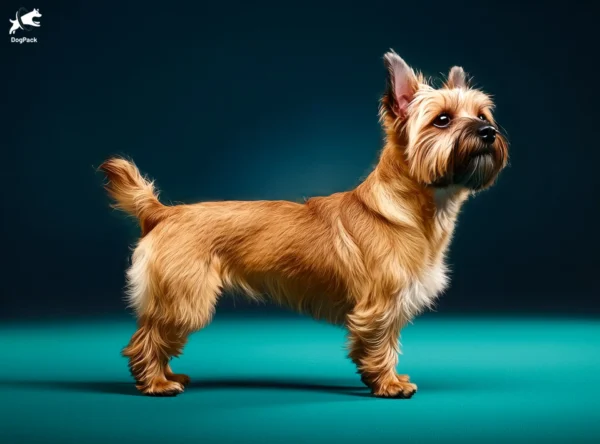Scottish Terrier Dog Breed Info & Overview
With its signature beard, pointed ears, and bold demeanor, the Scottish Terrier is nothing short of iconic. Known for unwavering loyalty and a big-dog attitude in a small package, this feisty companion never fails to charm. Despite its diminutive stature, the breed stands proud as a steadfast guardian and loving partner to anyone lucky enough to share its life.
Characteristics
Pictures
Breed History
Legend has it that the origins of this tenacious terrier trace back centuries, roaming the rugged Scottish Highlands on vermin-hunting duties. Known for its fearless nature, the early “Scotch Terrier” was a determined ratter that kept farms and homes pest-free. Over time, selective breeding honed these qualities, creating the foundation of what would eventually be recognized as today’s Scottish Terrier.
By the late 1800s, this scrappy little dog caught the attention of British dog fanciers, who further refined its appearance and temperament. These pioneering enthusiasts formed breed clubs that championed the dog’s distinct features. The Scottie’s irresistible combination of pluck and charm led it to cross the Atlantic, where Americans embraced its delightful silhouette and spunky personality.
Fascinatingly, prominent figures in history adored the breed, from royalty to U.S. presidents. Even pop culture icons featured the Scottie’s sharp profile and confident stance. Whether patrolling a Scottish farm or gracing an upscale city home, the Scottish Terrier’s heritage is steeped in bravery and loyalty—a legacy that continues to captivate dog lovers worldwide.
Temperament, Personality
Stubborn yet endearing, these dogs are not afraid to speak their minds—often quite literally through a distinctive bark or playful growl. With a natural reserve toward strangers, they can appear aloof initially, but once you’ve earned their trust, the bond is unbreakable. They tend to be quite self-reliant, which adds to their quirky charm.
Families who welcome a Scottish Terrier often find a loyal confidant. These dogs are protective of their households and exhibit a watchful nature, making them excellent little guardians. While not overly clingy, they relish cuddle time on the couch—especially with a favored human. They usually get along with children when socialized early, though their spirited temperament calls for respectful interactions.
Scotties sometimes display a strong prey drive, a vestige of their hunting heritage, so they may be wary around small pets like hamsters or guinea pigs. However, proper introductions can help them coexist with feline friends. Ultimately, the breed’s personality is a distinctive blend of confidence and affection—a faithful companion if you appreciate a dog with both backbone and heart.
Physical Characteristics
Sporting a sturdy frame and short legs, these dogs pack surprising power behind their tiny silhouette. Their most iconic feature is undoubtedly the long beard and eyebrows that lend a dignified, almost human-like expression. A well-groomed coat highlights the breed’s sharp profile, complete with pointed ears that stand erect, ever alert to the world around them.
The Scottish Terrier’s coat typically comes in black, though wheaten or brindle variations also exist. Beneath that wiry outer layer lies a soft, dense undercoat designed to protect them from harsher climates. Standing around 10 inches tall, they may appear diminutive, but their well-developed muscles allow them to excel at activities that require quick bursts of speed and agility.
This breed’s strong, rectangular body shape and deep chest complement its famously confident stance. Many owners find the breed’s dark, soulful eyes especially endearing. Altogether, the Scottie’s bold posture and rough coat give it an unmistakable look—an iconic silhouette that continues to win hearts. Whether you adore the classic black coat or a more unique hue, these pups always turn heads.
Health Issues
While generally robust, Scottish Terriers can inherit specific health conditions. Scottie Cramp is a peculiar neuromuscular disorder that might surface during moments of stress or excitement, causing awkward movements but typically not severe pain. Regular check-ups with a trusted vet can help identify early signs and ensure a comfortable life for your spunky companion.
Some Scotties may develop skin problems like atopic dermatitis, often triggered by allergens in their environment. A dedicated grooming routine and hypoallergenic shampoos can provide relief. Additionally, bladder cancer is slightly more common in this breed, so be vigilant about any urinary changes such as blood in the urine or increased frequency of bathroom breaks—early detection is crucial.
Routine screenings, including blood tests and X-rays, can catch potential issues before they escalate. Feeding them a balanced diet also supports overall well-being. Always consult reputable resources to keep up-to-date on health research. With proactive care, the Scottie remains a spirited, lively friend for many happy years.
Grooming Needs
Grooming a Scottish Terrier involves more than a simple brush-through. Their thick, wiry coat requires regular stripping or clipping to maintain shape and texture, which helps reduce shedding. Many owners prefer professional grooming every six to eight weeks, though some learn to master hand-stripping themselves. This careful coat management preserves the breed’s signature silhouette and keeps the fur healthy.
Brushing should become a weekly ritual to prevent matting, especially around the beard and legs where tangles can form easily. Using a slicker brush and a metal comb helps remove debris and loose hairs. Pay special attention to their “skirts” (the longer hair on the undercarriage) and their iconic facial furnishings to keep them tangle-free.
A gentle shampoo designed for wiry coats will keep their hair manageable without stripping natural oils. Some Scotties may experience skin sensitivity, so opting for mild, hypoallergenic products can be beneficial. Trimming nails and cleaning ears every few weeks is also essential for their overall well-being. In short, the breed’s high grooming needs are well worth the effort for those iconic looks.
Exercise Requirements
Though small, the Scottish Terrier has a surprisingly bold energy level. Daily walks or short play sessions in the yard help them stay fit and mentally engaged. A brisk 30-minute stroll is usually sufficient, but these dogs appreciate extra challenges—like sniff-based games or puzzle toys—that stimulate their clever, independent minds.
Interactive play can bring out their terrier tenacity, so prepare for spirited tug-of-war or a chase after squeaky toys. Their background in hunting small critters means you might see them relentlessly pursuing a ball or investigating anything that rustles in the bushes. This determination is part of their charm but does require safe spaces to explore.
Dog parks can be an option if your Scottie is well-socialized, though they tend to be selective about canine friends. Always supervise, as that terrier attitude might spark a feisty encounter with larger dogs. When you’re short on time, a structured walk around the neighborhood can suffice—just remember, consistent daily activity is key to a happy and well-behaved Scottie.
Training Tips
Training a Scottish Terrier can be akin to negotiating with a strong-willed toddler. Firm yet positive methods work best. Repetition and consistency go a long way, but be prepared to adapt your approach to accommodate their independent streak. Rewards-based training—tasty treats or enthusiastic praise—often succeeds where harsh corrections may fail.
Introduce obedience basics early, focusing on commands like “sit,” “stay,” and “come.” Short, engaging sessions keep them motivated, as lengthy drills can prompt stubborn shut-downs. Patience is essential; they’re quick-witted but not always eager to cooperate just for the sake of it. Keep the energy light and fun to secure their buy-in.
Socialization is another crucial element. Encourage calm, positive introductions with people and other pets to reduce wariness. Because Scotties are natural watchdogs, letting them witness various sights and sounds helps curb unnecessary barking. To reinforce good manners, consider advanced classes or targeted trick training—your terrier may surprise you with hidden talents once they trust the learning process.
Nutrition, Diet
Because the Scottish Terrier hails from a more robust lineage, a moderate-protein diet supports muscle maintenance without risking rapid weight gain. Aim for commercial kibbles formulated with around 22–25% protein and 12–15% fat, but choose recipes tailored for small-breed dogs with lower caloric density. Opt for chicken, fish, or lamb-based formulas that are free from unnecessary fillers.
An adult Scottie weighing around 20 pounds may thrive on approximately 1 to 1.5 cups of high-quality dog food daily, split into two meals. Look for brands that include fish oil or flaxseed, as these can help maintain healthy skin—a boon for a breed occasionally prone to dermatological issues. Always adjust portion sizes based on activity levels and life stage.
Some Scotties benefit from specialized diets if they show sensitivity to common allergens like wheat or corn. In such cases, grain-free or limited-ingredient formulas might reduce itching or irritations. Including fresh fruits and vegetables as low-calorie treats keeps them eager without overloading on fats or preservatives. Monitor their weight and consult your vet to fine-tune the ideal feeding routine for your particular Scottie.
Adoption, Breeders
When looking for a Scottish Terrier, explore breed-specific rescues or reputable shelters first. You might find a perfectly lovable adult waiting for a second chance. Breed-specific organizations often have insights into a dog’s temperament and medical history, which can help you make an informed decision before bringing a new friend home.
If you prefer a puppy, seek out established breeders who practice health testing, such as screenings for Scottie Cramp or genetic predispositions. Ask for references and visit the premises to observe how pups and parents are cared for. Websites like the Scottish Terrier Club of America and AKC Marketplace can guide you toward trustworthy breeders who uphold breed standards.
Adopting can be a deeply rewarding process. You not only offer a deserving dog a loving home but also create space at a shelter for another rescue. Meanwhile, purchasing from a responsible breeder lets you tailor your experience from puppyhood onward. Whichever route you choose, consistent training, socialization, and health care ensure your Scottie flourishes by your side.
Family Pet?
The Scottish Terrier’s independent spirit can add a dash of excitement to family life. They bond closely with their household, showing notable loyalty without being overly needy. With proper socialization, they’re tolerant of older kids who respect boundaries, although toddlers might find the breed’s quick reactions challenging. Still, many families discover an affectionate partner in this bearded companion.
They often do well in calm environments where routine and consistency prevail. A family that understands the Scottie’s occasional stubbornness will likely appreciate its fierce devotion. Games of fetch in the yard or short daily walks can quickly become cherished rituals, with your terrier eagerly awaiting family playtime.
Small but mighty, a Scottie can adapt to suburban homes or city apartments as long as exercise and mental stimulation are provided. They are typically okay with being the only dog, yet can cohabitate with others if carefully introduced. Ultimately, their even-keel nature and sense of humor make them a delightful addition to households prepared for a spirited, self-assured pet.
Right For You?
If you want a dog that pairs dignified charm with a dash of stubbornness, the Scottish Terrier might be your soulmate. They thrive in homes where owners can meet moderate exercise needs and provide consistent, positive training. You’ll also need to budget time (and possibly funds) for their grooming regimen, which is key to preserving that handsome, scruffy style.
Apartment dwellers appreciate their compact size, but a fenced yard can be a bonus for those who love to dig or chase small critters. Scotties are well-suited for devoted seniors or single adults seeking a loyal companion with a strong personality. In short, if you’re prepared to embrace their quirks—and can’t resist that iconic beard—this breed may be your perfect match.
Conclusion
The Scottish Terrier offers the kind of companionship that runs deep. Its rugged exterior houses an affectionate yet independent spirit—a dog that thrives on both close bonds and personal space. While grooming demands and a determined temperament may pose challenges, loyal owners cherish this breed’s heartwarming devotion and trademark charm. If you’re seeking a bold, spunky partner wrapped up in a compact package, this classic terrier could be exactly what you’re looking for.
FAQs
-
Why does the Scottish Terrier have such a distinctive “goatee” and long eyebrows?
The Scottish Terrier’s beard and bushy eyebrows are not just for looks—they help protect their face from dirt, debris, and bites while digging or hunting vermin. These features were essential when navigating rough terrain and dealing with aggressive prey underground.
-
Do Scottish Terriers have a natural instinct to chase moving objects?
Yes, Scottish Terriers have a strong prey drive due to their background as vermin hunters. They may instinctively chase squirrels, birds, or even bicycles, so keeping them on a leash or in a fenced yard is important to prevent sudden dashes after fast-moving objects.
-
Why do Scottish Terriers “talk” with grumbles and huffs?
Scottish Terriers are known for their expressive vocalizations, often grumbling, huffing, or making deep sighs rather than barking excessively. These sounds are their way of communicating their moods, frustrations, or requests, making them a surprisingly chatty breed in a subtle way.
-
Do Scottish Terriers prefer to bond with one person?
While they can be affectionate with the whole family, Scottish Terriers often form a strong attachment to one primary owner. They tend to be independent and aloof with strangers, but their loyalty to their favorite person is unwavering and deeply devoted.
-
Why do Scottish Terriers sometimes act stubborn during training?
Scottish Terriers were bred to work independently, which means they prefer to think for themselves. Their intelligence makes them quick learners, but they need firm, consistent training with positive reinforcement to stay engaged. Repetitive tasks can bore them, so training should be varied and interesting.
Breed Ratings
The Scottish Terrier is quite smart but doesn’t always show it on command. Consistent, fun challenges bring out their clever streak.
They enjoy games, though they can’t match the endless exuberance of some breeds. Spurts of joyful play are common, especially with favorite humans.
Moderate energy means short walks and active playtime suit them well. They appreciate bursts of fun followed by cozy naps.
Low shedding is a plus, but their wiry coat requires meticulous upkeep. Stripping or clipping significantly reduces loose fur.
Originally bred to hunt vermin, a Scottie may chase small animals. Supervision around smaller pets is advisable.
They need regular clipping or hand-stripping and frequent brushing, so grooming can be time-consuming or require professional help.
They learn quickly but can be stubborn, demanding patience and positive reinforcement to achieve reliable obedience.
Generally independent, they’re okay with moderate alone time. Still, too much isolation can lead to boredom and barking.
They’ll alert you when necessary but aren’t prone to constant yapping. Socialization and basic training help manage excessive barking.
Scotties rarely drool unless they’re overheated or see a delicious treat. Expect minimal slobber.
They can be selective with canine companions. Early socialization helps, but they often prefer being top dog.
Despite a few breed-specific issues, they’re fairly sturdy. Proper vet care, exercise, and a balanced diet keep them thriving.


